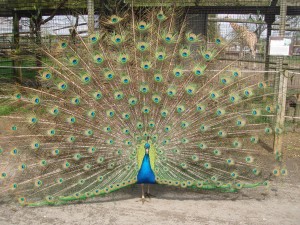I love a good story! I see “Once Upon a Time” everywhere and love to watch plots, fictional and real life, unfold like a lotus flower. Like a good story, asana practice has a beginning, middle and end with every unrolling of the mat, from the first OM to the last.
Mythology (specifically Arthur Lore) was a passion of mine for many years. I couldn’t get enough of the tales of King Arthur and the many characters whose stories arose from this myth. My yoga path criss-crossed this other love of mine for a while, but each seemed distinctly separate from the other. I had no idea that one day I would revisit the mythological realm on the yoga mat.
During my teacher training at the Prancing Peacock, I delved, not only into the prescribed syllabus, but into the literature of the practice; this included a wonderful book called, Myths of the Asanas: The Stories at the Heart of the Yoga Tradition by, Alanna Kaivalya & Arjuna van der Kooij. It was from this book that I was able to put a context to some of the stories and origins of the Asanas.
In honor of the Prancing Peacock, I offer this morsel of my inspiration:
Of Yogis, Gods, Sages, Animals & Earth were these asanas born; their stories give us the forms and we infuse them with breath and life.
Like the constellations in the sky, we often need to employ our imagination to make the connections between what we see and what we’re told is there; the same can be said of the names and shapes of the poses we play with on the mat. The difference here is that every time we practice, we discover something new. Practicing while guided by the mythological tales from which the asanas were born, shifts the practice from a simple meditation in motion to a timeless meditation in motion nourished by potent images and emotions.
Here’s an Amuse-Bouche (one bite appetizer) to whet your mythological palate:
Mayurasana: Peacock Pose
Kartikeya is the six-headed son of the Pleiades (six heavenly sisters), originally born as six individual identical sons of the six sisters. Parvati (Shiva’s consort), under whose wing & heart the boys were reared, squeezed them with her goddess-like strength and equal force of love, forging them into one powerful being.
Only a few months old, Kartikeya was already a formidable warrior. His choice for transportation was the Peacock (also known as a fierce fighter). The peacock, in contrast to its beauty and majesty, was able to kill and eat Cobras and transform the deadly venom into something of grace.
It was upon this glorious creature that Kartikeya led an army of gods and demigods into a conflict that was to restore their rightful place in the heavens. The good of the gods prevailed in no small part due to the fearless and loyal peacock.
Yogic mythology honors the peacock, its sattvic nature & symbolic ferocity, fearlessness & loyalty. Krishna even wears a peacock feather in his hair.
Mayurasana, over time, aids in our digestion just as the peacock was able to digest the cobra’s poisonous venom. Humans digest any number of toxic entities (in our food, air, water, thoughts, words, actions, etc.) that can be transformed into something of beauty.
This is an oversimplification of the myth, but touches on its essential quality and message. The book merely touches the surface of the potential for discovery we have on the mat; it provides a delightfully fresh lens through which to view and experience asana practice.
Once upon a time…
The End.

